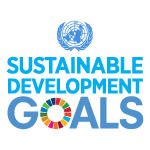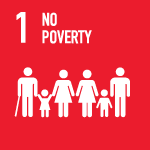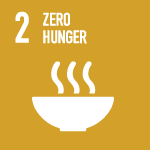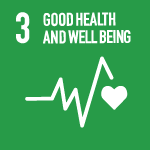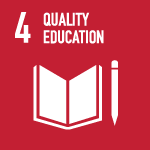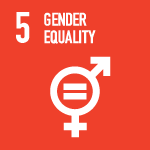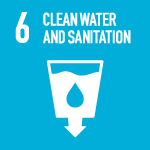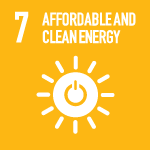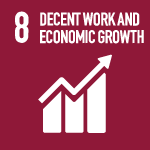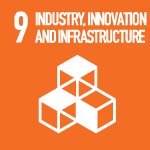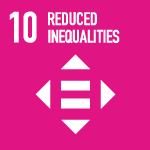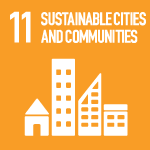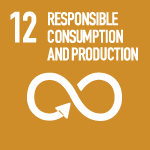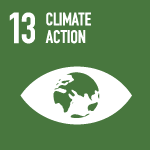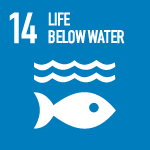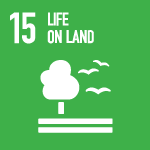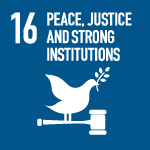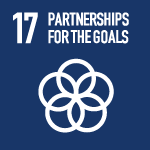Goal 11: Make cities and human settlements inclusive, safe, resilient and sustainable

Sustainable Development Goal 11 addresses violence against children.
Education and Early Childhood Development
Schools can be the setting for forms of violence such as bullying, corporal punishment and sexual exploitation and abuse that must be addressed directly. But schools can also be an early detection mechanism for violence and neglect that happens in a child’s home or community. Children exposed to violence and other adversities at home or at school are more likely to drop out of education, compromising their chances of becoming productive citizens. Realizing the right of all children to a safe, 6 inclusive7 and quality education plays a foundational role in creating more productive, equal and inclusive societies.
Experiencing toxic stress and violence in early childhood can alter the development of the brain structure and function, such as language acquisition and cognitive functioning, which can result in deficits in social and emotional competency. Later in life, these can decrease economic productivity, increase the likelihood of intergenerational poverty, and perpetuate violence in personal relationships.
A safe, clean and connected living environment
Safe and healthy living environments, including accessible public transportation systems, water and sanitation, modern energy and technology, are essential for children’s well-being and protection. For example, children are often tasked with fetching water and firewood for the household, and those travelling long distances to do so are at risk of violence. Long hours spent on these tasks also compromise their development and education.
Access to information and communication technologies (ICT) enhances children’s learning and increases their opportunities for social contact and access to protection, as well as their participation. Various web-based helplines for children saw an increase in contacts during the COVID-19 pandemic. The online world can also put children at risk of exploitation and abuse, which harm their health (including their mental health), education and development.
Climate action
The climate crisis and its severe consequences, particularly for already vulnerable populations, are fueling the drivers of violence such as poverty, migration and displacement and lack of access to education. It is a threat multiplier10 for forms of violence against children such as child marriage, child labor and child trafficking. Urgent and child-sensitive adaptation to and mitigation of the impacts of the climate crisis is essential to reduce the risks of violence against children that it presents.
Peaceful, inclusive and just societies
The risks of violence against children are heightened by poverty and inequality, forced displacement, ongoing humanitarian crises, conflicts and violence, and the impact of the climate crisis, which can expose them to forms of violence such as trafficking and deprivation of liberty in the context of detention related to migration and peaceful protest. These risk factors even normalize violence against children. Organized criminal activity, underpinned by evolving technologies such as the darknet, encryption and the use of cryptocurrencies, make the detection of crime and the pursuit of justice even harder.
Achieving justice for children means ensuring that penal, civil and administrative justice systems are child-friendly and that they prioritize children’s well-being. At the same time, justice for children also encompasses the broader concepts of social and environmental justice as an integral part of promoting peaceful and inclusive societies.
Child-friendly justice systems guarantee the right to a remedy for child victims, are accountable to children, use the deprivation of liberty of children in conflict with the law as a measure of last resort, and prioritize restorative justice approaches.
Social justice must be afforded to all children. This also includes migrant and stateless children who often live in inadequate living conditions and lack access to essential services such as education, health and justice.
Children as agents of change
A successful national development plan requires inclusive partnerships – at the global, regional, national, and local levels – that are based on shared visions, principles and values that place all people, including children, at the center. Children are agents of change15 and need to be a part of participatory and representative decision-making processes.
When children engage with their peers and adult counterparts in civic activities, it helps to strengthen their protection against violence, as well as the prevention of and response to that violence. Children’s meaningful participation as peaceful agents of change is empowering not only to each child individually but also collectively to their entire generation. Participation strengthens their sense of self-confidence and citizenship, deepens their understanding of their rights, creates an environment that is conducive to speaking up and helps to redress the injustices suffered by themselves and their peers. Safe, inclusive and accessible public spaces17 are essential for the creation of such an environment.


